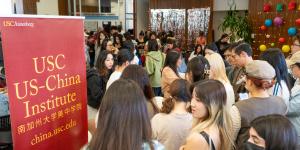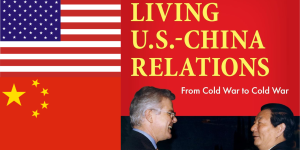Join us for a free one-day workshop for educators at the Japanese American National Museum, hosted by the USC U.S.-China Institute and the National Consortium for Teaching about Asia. This workshop will include a guided tour of the beloved exhibition Common Ground: The Heart of Community, slated to close permanently in January 2025. Following the tour, learn strategies for engaging students in the primary source artifacts, images, and documents found in JANM’s vast collection and discover classroom-ready resources to support teaching and learning about the Japanese American experience.
Easterlin, "China’s life satisfaction, 1990–2010", 2012
Abstract
Despite its unprecedented growth in output per capita in the last two decades, China has essentially followed the life satisfaction trajectory of the central and eastern European transition countries—a U-shaped swing and a nil or declining trend. There is no evidence of an increase in life satisfaction of the magnitude that might have been expected to result from the fourfold improvement in the level of per capita consumption that has occurred. As in the European countries, in China the trend and U-shaped pattern appear to be related to a pronounced rise in unemployment followed by a mild decline, and an accompanying dissolution of the social safety net along with growing income inequality. The burden of worsening life satisfaction in China has fallen chiefly on the lowest socioeconomic groups. An initially highly egalitarian distribution of life satisfaction has been replaced by an increasingly unequal one, with decreasing life satisfaction in persons in the bottom third of the income distribution and increasing life satisfaction in those in the top third.
Authors: Richard A. Easterlin, Robson Morgan, Malgorzata Switek, and Fei Wang
The research was published in the Proceedings of the National Academy of Sciences.
Featured Articles
Please join us for the Grad Mixer! Hosted by USC Annenberg Office of International Affairs, Enjoy food, drink and conversation with fellow students across USC Annenberg. Graduate students from any field are welcome to join, so it is a great opportunity to meet fellow students with IR/foreign policy-related research topics and interests.
RSVP link: https://forms.gle/1zer188RE9dCS6Ho6
Events
Hosted by USC Annenberg Office of International Affairs, enjoy food, drink and conversation with fellow international students.
Join us for an in-person conversation on Thursday, November 7th at 4pm with author David M. Lampton as he discusses his new book, Living U.S.-China Relations: From Cold War to Cold War. The book examines the history of U.S.-China relations across eight U.S. presidential administrations.




